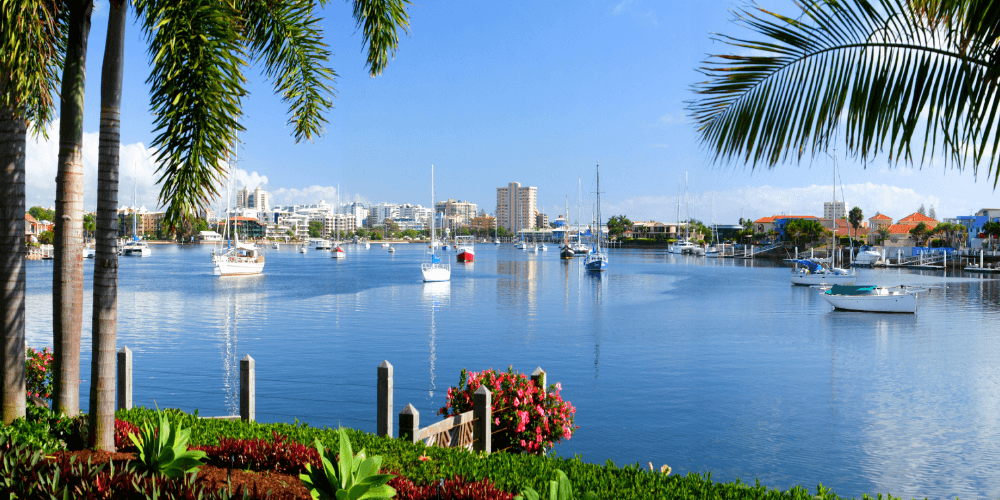The Sunshine Coast property market continues to run its own race, defying the trends seen in the southern states and the Queensland capital.
My Weekly Preview Article | by Roxanne McCarty-O’Kane | 8 November 2018
The Sunshine Coast property market is continuing to flex its muscles despite reports the major Sydney and Melbourne markets are beginning to stagnate. In fact, multiple reports have highlighted the region as the jewel in the state property crown, having outperformed almost every market in southeast Queensland in the past 12 months.
This alone will give peace of mind to those second-guessing their future as homeowners and investors, but when you also consider a number of renowned property experts are firmly backing the Sunshine Coast as the market to watch, it is easy to have confidence that the region will continue to ride on the property upcycle trajectory. Place Projects property commentator Syd Walker says population growth, the strength of tourism and the economy and the continued property demand versus supply imbalance have created the perfect conditions for the thriving property market.
“The rate of [population] growth on the Sunshine Coast is more than most developed countries and one of the fastest rates in the country,” he says.
“This strong population growth in the area has seen demand for property outstrip supply during recent years with new developments recording strong sales volumes and established properties consistently being sold at higher prices than they were purchased for.
“Tourism growth to the Sunshine Coast has remained fairly steady with over 12 million visitor nights last year. This has helped the economy enjoy strong jobs growth during recent years. In the year to June 2018 jobs growth was recorded at 7.1 per cent.
There are at least 12 major infrastructure projects planned for the area over the coming years with many additional minor projects also planned.
“These 12 infrastructure projects alone are expected to inject approximately $25 billion into the Sunshine Coast regional area economies over the coming years, as well as create over 36,000 direct and indirect jobs and attract 20,000 students and over 110,000 residents to the area. “The scale of these infrastructure projects will have a significant impact on the economy.”
The Place Advisory Sunshine Coast Regional Area Property Market Report shows despite a soft decline in sales volumes in the past 12 months, largely due to lack of supply coming onto the market, demand for property has increased thanks to the boost in jobs and trust in the local economy.
“The region’s property market has now moved into unprecedented heights, defying the lacklustre growth that has occurred in Brisbane during the same period. The past year, ending June 2018, has seen impressive growth rates of 7.3 per cent for houses and 4.8 per cent for units recorded for the region overall,” Mr Walker says.
This is backed up by the latest BIS Economics Australian Housing Outlook. The report reveals the Coast is the state’s star performer for 2018, with price rises outperforming both Brisbane and the Gold Coast over the past year.
The report shows median house prices on the Sunshine Coast rose by three per cent in the year to June 2018 and are expected to continue to grow strongly, reaching $650,000 in 2021. In comparison, the report predicts the Brisbane median house price will reach just $615,000 in 2021.
Project Urban managing director Andrew Stevens says the local property market is on an “upswing” and poised to capitalise on the southern downturn through migration, which will inject financial investment and intellectual property into the region.
“This is the first property cycle where our population and economy has hit a self-sustaining level. Our proximity to Brisbane will always have some influence, however the Sunshine Coast has matured and is taking control if its own future,” he says.
“I cannot remember a time when the market was so solid. Yes, we have had plenty of upturns in the past, but never with the fundamentals for our economy so strong.
“[It is] conservative growth supported by employment generation and infrastructure investment. The Coast’s economy is more sophisticated than in previous property cycles with the fundamentals providing a safety net against a national property downturn.”
He says while the future for the Coast has never looked brighter, it is more important than ever to maintain housing affordability.
Property commentator Michael Matusik says while our region is comparatively more affordable than the Sydney and Melbourne markets and continues to offer greater value, you need to look closer at how stagnating household incomes are having an impact.
“The local average wage is $64,000, which makes housing look expensive at nine times house price to wages,” he says. “The average total disposable income per household on the Sunshine Coast is $108,000, making the real affordability ratio a much healthier 5.3.”
Mr Matusik says the region added some 16,000 new dwellings over the past five years to keep apace with population growth, but the development industry supplied only 12,500 “new digs”.
“The Sunshine Coast is undercooked by 20 per cent.
“The region is expected to hold 10 per cent of southeast Queensland’s new housing development – being some 38,000 new dwellings – over the next 20 to 25 years. And I estimate the need to create 4000 new dwellings per annum over the next decade.”
From the experts:
“The local average wage is $64,000, which makes housing look expensive at nine times house price to wages. The average total disposable income per household on the Sunshine Coast is $108,000, making the real affordability ratio a much healthier 5.3”
“I cannot remember a time when the market was so solid. Yes we have had plenty of upturns in the past, but never with the fundamentals for our economy being so strong.”
“The region’s property market has now moved into unprecedented heights, defying the lacklustre growth that has occurred in Brisbane during the same period. The past year, ending June 2018, has seen impressive growth rates of 7.3 per cent for houses and 4.8 per cent for units recorded for the region overall.”




